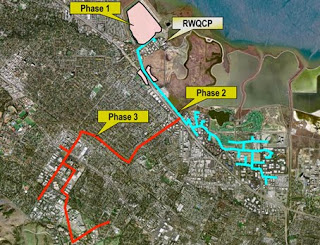
More and more, the water and wastewater worlds are starting to intersect, as engineers, managers, planners and public officials begin to realize that "wastewater" and its components can be valuable resources.
In the San Francisco Bay area, the Woods Institute for the Environment recently hosted a dialogue on resource recovery from wastewater - specifically, how systems for wastewater management and water reuse should be defined for the San Francisco Bay Area in the 2020s. The dialogue brought together consultants, researchers, water quality agencies and government and industry leaders to inform planning efforts and align research with those efforts.
The discussion focused on state-of-the-art technologies for water reuse and energy recovery from wastewater; and ideas for use of reclaimed water for ecosystem restoration and non-potable reuse applications, extraction of renewable energy, use of nutrients and financing and development of distributed and centralized wastewater treatment systems around the Bay. Workshop outcomes will help to promote investments to revitalize Bay Area water and wastewater infrastructure, improve the stability of Bay area ecosystems, increase the security and reliability of freshwater supplies, decrease dependence upon imported freshwater, and increase renewable energy generation. The expected solutions will convert current liabilities (e.g., energy required for wastewater treatment) into assets (e.g., energy from wastewater treatment).
More
Another indication of a paradigm shift in the wastewater industry was a decision to rename the Golden Hills Sanitation Company in Tehachapi, CA as Brite Canyon Resource Recovery. The company is expanding their capacity from 25,000 gallons per day to 1 million gallons per day and will send their tertiary treated wastewater to Tom Sawyer lake, improving the water quality there.


